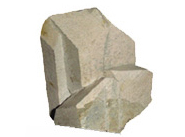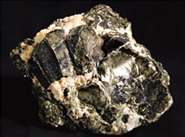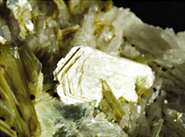Distribution of Minerals
Stones that we may encounter in the mountains or on construction sites are rocks, which are generally composed of minerals. For instance, minerals such as quartz, feldspar and mica are the main constituents of the rock 'granite'. Thus, rocks are assemblages of minerals such as quartz, feldspar, mica, hornblende, pyroxene, olivine and magnetite. The weathering of rocks generally forms soils whose main components are minerals such as quartz, feldspar, mica and clay minerals. Extraterrestrial materials such as meteorites or moon rocks consist of minerals such as olivine, feldspar, pyroxene, bronzite, diamond, magnetite and chromite.
Most solid materials except plants, animals and human products are minerals. They exist in rocks and soils, therefore they can be found on mountains, in fields, on the seashore, by the riverside, on the ocean floor and even in the air. An example of fine-grained minerals in the air is seen in East Asia when sand dust is blown from northern China and Mongolia, the dust usually comprising quartz, calcite, feldspar and clay minerals with some heavy metals. Many useful minerals are deposited on and under the sea floor. Heavy minerals or diamond are concentrated near the seashore. Heavy minerals include magnetite, ilmenite, zircon and monazite. We can also find manganese oxides, iron oxides, zeolites or clay minerals on the sea floor. Even in the seawater, we can find minerals. Minerals exist everywhere on earth and even in space.

FluoriteUSA
Fluorite is characterized by noticeable fluorescence. It is used for manufacturing hydrofluoric acid or solvent for steelmaking.

Mineral As Basic Component of RockUSA
The rock 'granite' is generally composed of quartz, feldspar and mica.

Quartz

Microcline

Orthoclase

Biotite
